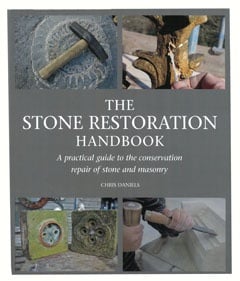Report : Cleaning
Cleaning is a compromise between the competing aesthetics of pristine stonework and the patina of time. For those carrying out the work it is a question of using methods that can achieve the required level of compromise.
How clean is clean? That question exercises the minds of the conservation sector of the industry and is never resolved. One person’s dirt is another person’s patina.
Often, especially on significant buildings and structures, how clean the masonry should be is decided by someone other than the person carrying out the cleaning. The cleaning method might also be decided by someone other than the contractor doing the work. But it is up to the contractor to achieve those aspirations without damaging the fabric of the structure.
There are plenty of examples of the disasters that can result from inappropriate stone cleaning, especially using chemicals. Historic Scotland was one of the first to explore them systematically with research in 1989-1991. Then in 1994 Nicola Ashurst, who had already jointly authored the five-volume Practical Building Conservation, wrote well over 500 pages more in two volumes of Cleaning Historic Buildings.
There has been plenty more since. One of the most recent was The Conservation, Repair and Management of War Memorials by David Odgers published by Historic England on 11 June. It includes a six-page section on cleaning among its 100+ pages. It is well worth looking at, which you can do at bit.ly/WM-care.
Of particularly practical use for a stone specialist carrying out cleaning work is another book published this year called The Stone Restoration Handbook, written by Chris Daniels, who has plenty of hands-on experience of conservation and restoration of stone. It includes 20 illustrated pages on stone cleaning among its 224 pages. It is £25 and can be bought online and from bookshops (ISBN 978-1-84797-907-0).
Chris starts the chapter on cleaning by saying: “Here is not the place to discuss the dilemma of cleaning buildings (and neither will these issues be discovered on the labels of proprietary cleaning materials), but it certainly is the place to arm you, the artisan, with an approach (and having the right approach is akin to having the right chisel) for finding out exactly what the situation is before making a plan.”
He points out that “all stones can have unique characteristics, even from those in the same bed in the quarry. Add to this varying environments, localized agents of decay and a mixture of positions in the structure, and ‘one size fits all’ starts to look like a dangerous policy”.
It is why cleaning should be left to those with the knowledge and experience to know how to do it successfully.
Different cleaning methods are appropriate for different stones in different locations and being used in different ways.
Many believe that, generally, stone used externally is better left without surface applications so it can ‘breathe’ – that is, so that moisture can escape. Sometimes stone is treated to make it easier to clean graffiti off, but this might trap moisture in the stone and that can lead to accelerated decay.
Of course, it is not only historic stone facades and paving that are cleaned. When it comes to newly laid floors, worksurfaces and wall tiles and linings, sealing is often a good idea. It will protect the stone against stains from spills of greasy and acidic materials that can stain and etch the surface and penetrate further into the structure of the stone, making the removal of such marks difficult if not impossible without grinding away the affected stone. Sealing the stone will make a regular cleaning regime a whole lot easier.
With some of the nastier chemicals previously used for cleaning stone no longer available or considered too dangerous either for operatives or the environment to be sloshed about building sites, physical methods of removing grime are often preferred, especially superheated water and gently applied abrasives.
In the past, gritblasting by gung-ho operators has led to some significant disasters and extensive loss of masonry and sculptural detail. Hopefully, that no longer happens. There is generally a greater awareness of what is required from a clean and how to achieve it.
The manufacturers of gentle abrasive cleaners (such as Vortech from Restorative Techniques, Torc from Stonehealth and Rotec from Remmers) and superheated water pressure washers (Doff from Stonehealth, Thermatech from Restorative Techniques and Torik from Tensid) have helped by training operatives in the use of their products. Stonehealth and Restorative Techniques keep registers of those trained so that clients and architects have the assurance of being able to use approved operatives. The companies also offer CPD instruction in cleaning techniques to architects and other specifiers and will make site visits to assess the cleaning methods that should be used.
Tensid CEO Brian Klelund annually presents a Building Conservation Master Class at West Dean College and is Principal Tutor on a course led by David Odgers of Odgers Conservation. Jamie Fairchild of Restorative Techniques also presents a Master Class at West Dean and often spends a day or two a week providing CPD for architects keen to learn more about facade cleaning.
The websites of the companies supplying cleaning solutions have improved over the years as much as the products they supply, providing a lot of useful information and case studies. Restorative Techniques is currently having a series of videos made by videographer Andrew Cheng to provide answers to cleaning questions and the use of cleaning products and equipment.

